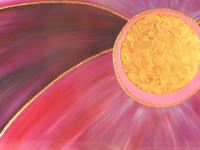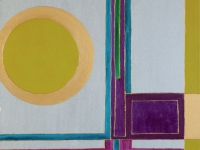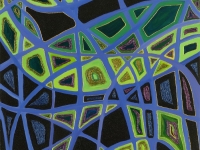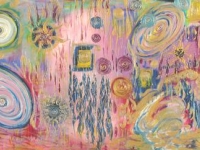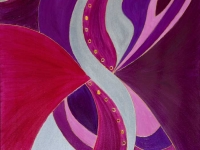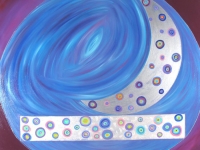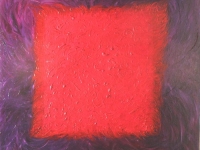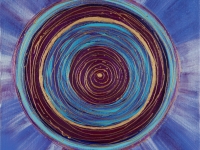To carefully analyze the complex and deeply rich and intimate art production of this young Roman painter, you need a major premise. Absolutely essential for a proper understanding is in fact the knowledge of the relationship between form and color.
The Form Color duality is in fact an intelligent constant of practically the entire production of Sabrina, pseudonym SaFo. Ordered measures of often fantastic, at times even cosmic geometrical decomposition. Never excessive, never violent. SaFo’s shapes enter the bright but still serene chromatic context. With no violent shades, no hasty or exaggerated combinations.
Such is the case with Pleasant Modern Sun (“Sole Moderno” – 2012), a work that seems perfectly in line with the lesson of the best twentieth-century Avant-Garde; a finely measured work, and one of great and composed formal elegance. So it is still with the whirling and acrobatic Moon Spell (“Incantesimo Lunare“), and again with the difficult and technical Golden Vortex (“Vortice Oro“), where the artist engages successfully with the complex and mysterious world of pure monochrome and composition.
So it is in the latest compositions of the collection, where the Fantastic is made possible in even more proper terms through worlds and shades that lead into a cosmic dimension. The shades of SaFo are therefore completely original, on all occasions full without being rigid and compact. They appear with a personal dreamy appeal, linked to the great impact of a dreamy Surreal, and at the same time to an almost adolescent Naive, of an artist-in-progress of discovering life and things, and an ultimate message.
Because, in the end, this is precisely the profound significance of this more than interesting proposal of art: a message about the cosmos, about color, about things, about life, and at the same time the search for a message from the cosmos, from life itself. For a sincere and fantastic art, which will ever deserve attentive study and observation, along with involved participation and interpretation.
Rome, April 2013 – Alfredo M. Barbagallo



